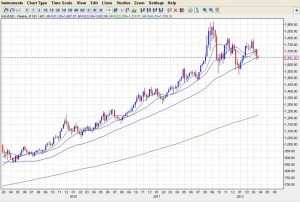Do You Need Temporary Health Insurance?
Most discussions of health insurance just assume that it will be held for a long period of time. However, sometimes there is simply a transitional period where you need to bridge the gap. Since 2008 the job market has been relatively unstable and being laid off can leave you without proper insurance coverage. For these people, temporary health insurance is usually the best option.
Short Term Coverage
Temporary health insurance is also known as short term health insurance in some circles. As the name suggests, this form of insurance is put in place for a relatively short period of time. Most policies will cover you from between 30 days and six months depending on the specific terms offered. In some cases, the term can be extended out to a full 12 months, but this is really not the purpose of this type of policy.
Why Buy Short Term Coverage?
Why would anyone want such a temporary form of health insurance? Normally you wouldn’t unless it’s only needed for a short period of time. For example, a person hired for a new job typically is not given health insurance immediately. They usually have to wait between 30 and 90 days before they can join the group policy held by the business. A temporary health insurance policy can fill this gap so that if anything happens in the interim, you are covered.
How to Get Short Term Health Insurance
Getting temporary health insurance is actually fairly easy. Since the insurance company will be covering you for such a short period of time, it is much more lenient in who it will issue policies to. You can simply access quotes online by doing searches for “short term health insurance” or by speaking with a health insurance salesperson in your area.
The application is actually very simple. You are going to list who you wished to be covered by the policy as well as their basic information. This includes their name, address, date of birth, place of work, phone number, height and weight. You will then be asked specific questions about their health including past treatments, diagnosis, surgeries and ongoing medications being taken. The terms of the policy that you are seeking will then be detailed in relation to deductible amounts and premiums. At this point, the policy is usually submitted and approved, rejected or further clarity one particular issues is sought by the insurance company. There is no need for a physical in the vast majority of cases.
The biggest issue that arises with these policies is pre-existing health conditions you might have when applying. The language of every temporary health insurance policy is different, but in general anything you have been treated for in the previous three years will be excluded from coverage. If you have a serious, ongoing medical condition, you may be better off seeking either COBRA coverage from your previous job or looking into more permanent private insurance.
When applying, it is vital that you pay close attention to the deductible terms of the policy. Most temporary health insurance has a stepped deductible plan. You will be responsible for 100 percent of the deductible up to a certain amount, then 50 percent of the costs up to a second level after which the insurance pay everything. For example, you might be required to pay all of the first $500 in medical costs incurred and then 50 percent of the next $3,500. Only after you incurred $4,000 in total fees would the insurer pay 100 percent of your ongoing medical costs. It is vital that you understand the terms of your policy so that you don’t end up buying something that doesn’t satisfy your needs.
If you are someone who currently has a Health Savings Account, you should consult the HSA Rules prior to making any changes in your health insurance coverage. In order to participate in HSAs you need to be on a high deductible health plan so it’s important to make sure you maintain the correct policy.
Temporary health insurance is designed to fill gaps in your coverage. If you need a policy to tie you over for a few months, the low cost and ease of approval make these policies a good choice.

